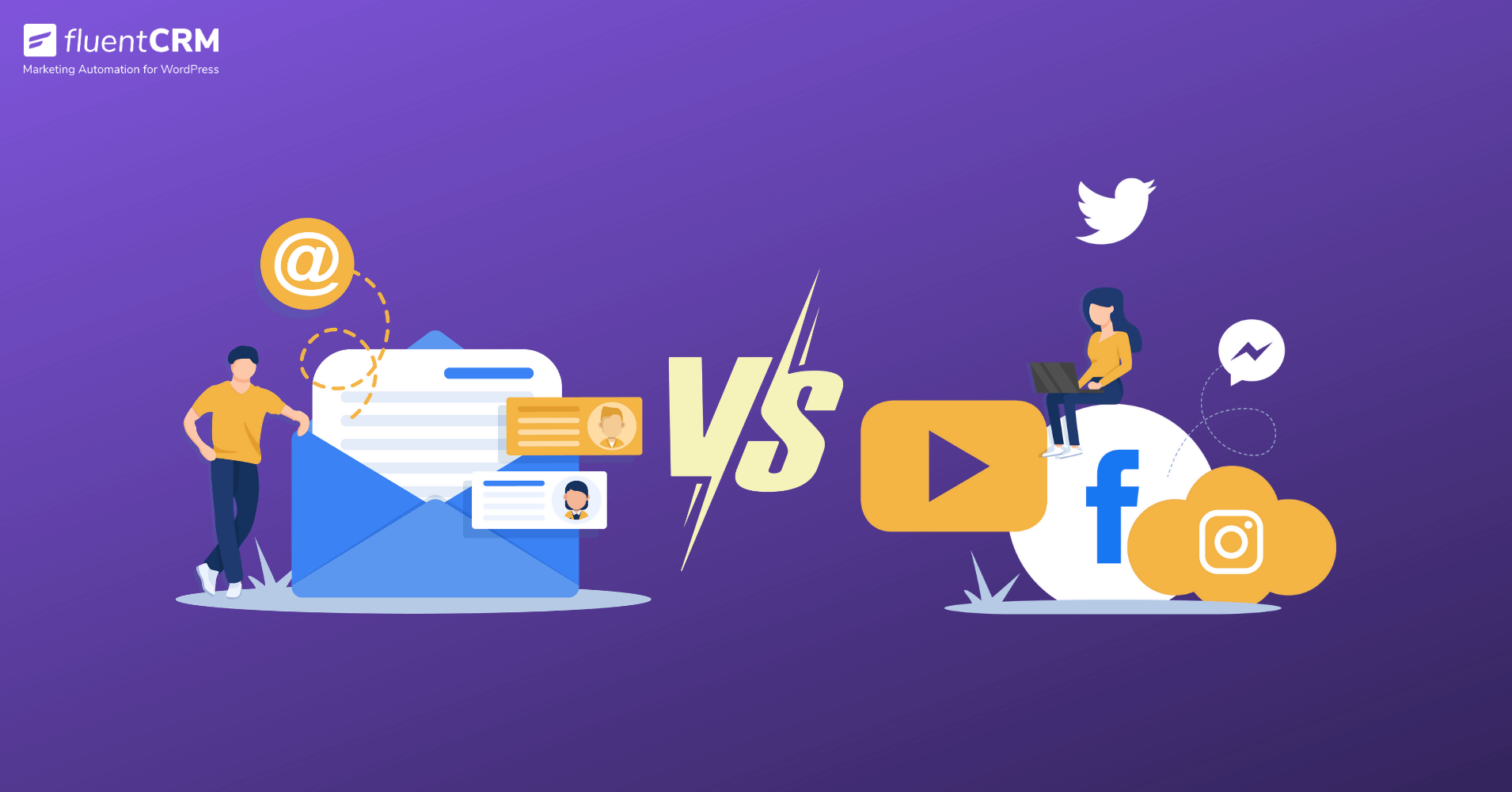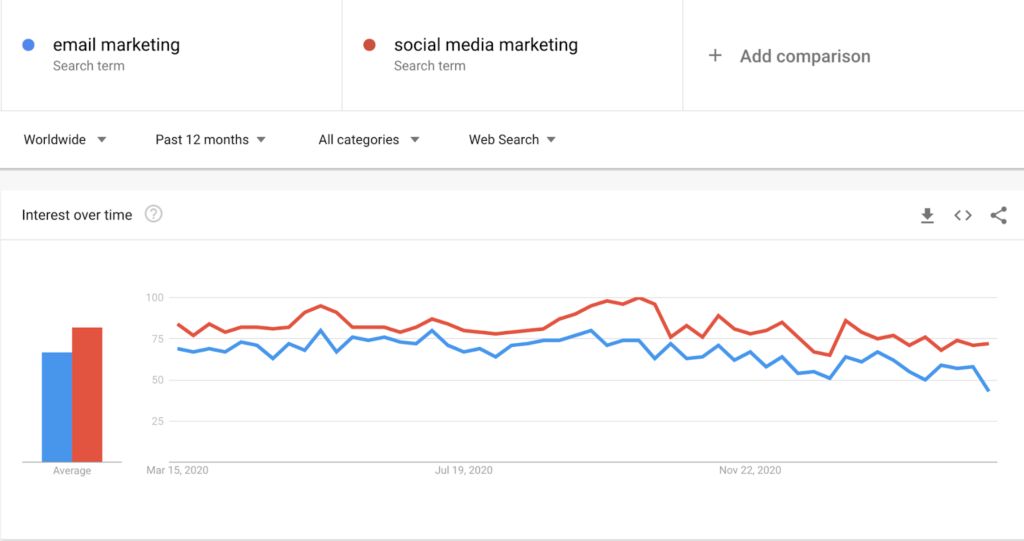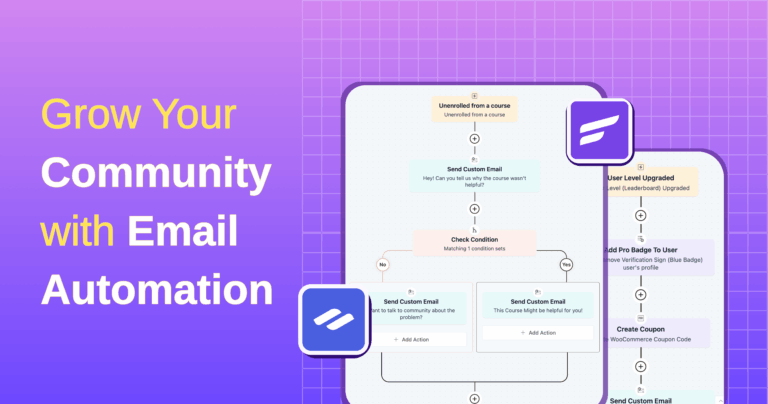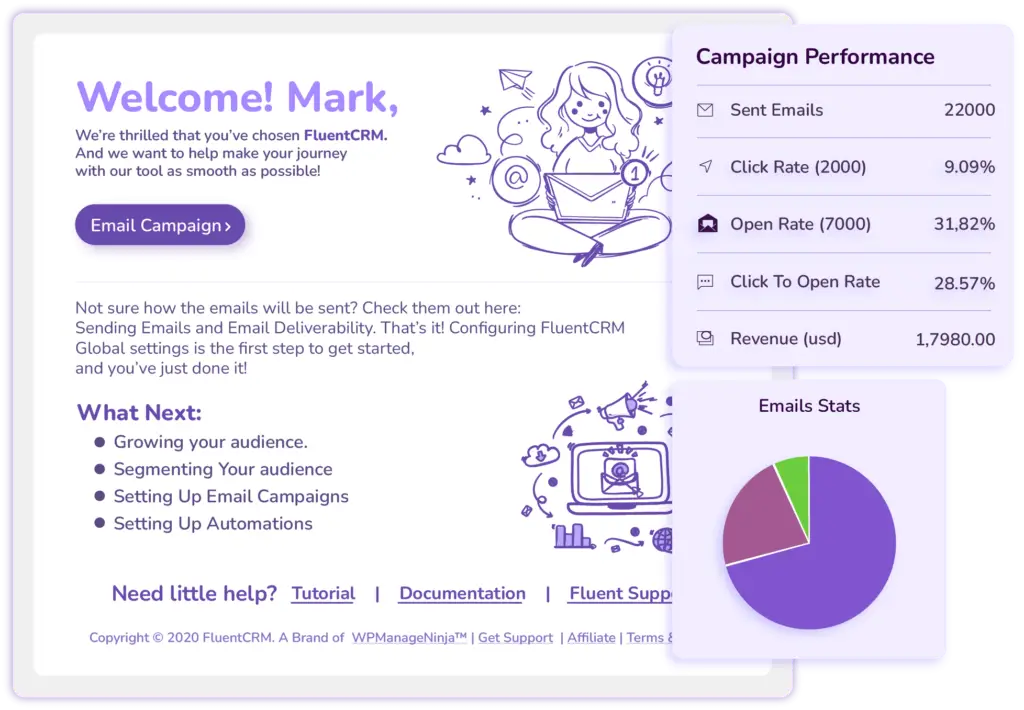
Email Marketing vs Social Media: Which is for What?
Email marketing and social media are two channels today’s digital marketers simply can’t leave out of their marketing strategy. But one thing is for sure; internet marketers spend an awful amount of time thinking about whether to prioritize email marketing or social media marketing. If you’ve been there, you know that struggle. And no, we wouldn’t jump into the same debate, and you shouldn’t too!
Why?
Get this one thing straight into your head, there’s no right or wrong marketing channel. If people are using a platform, it is a worthy marketing channel.
There’s no point in debating which is a better marketing channel between email marketing and social media. The wiser thing would be to decide your purpose for using a marketing channel.
This article isn’t suitable for you if you’re looking for a typical email marketing vs. social media comparison. But if you’re having a hard time understanding both the channel’s purpose, this article can help!
But before you begin—
What’s Your Marketing Objective?
Marketing strategies can differ from business to business. While some businesses are startups trying to build an audience, some businesses have already established their brand and are more focused on maximizing marketing potential. That’s exactly why an internet marketer needs to decide their marketing purpose.
So ask yourself –
- How much is your marketing budget?
- Is your marketing focused on short-term success or long-term success?
- What are your marketing priorities? Do you want to generate leads or engage with your audience?
- Do you prefer scalability or personalization?
- What are you trying to achieve? sales, and conversion?
If you’ve got answers to these questions, you have a clear marketing objective in place. With a clear marketing goal, it would be much easier to select specific marketing channels for specific marketing purposes.
Email Marketing vs. Social Media: Which Fits Your Marketing Goals?

Email marketing is one of the earliest Internet marketing channels, while social media is the growing trend in Internet marketing.
It’s not that hard to spot why. Email boasts an impressive 3.9 billion users, which is more than half of the world’s population. However, the growing popularity of smartphones and digital devices got social media trending.
In fact, Facebook boasts 2.7 billion monthly users alone!
As we’ve said earlier, if people are using a platform, it’s worthy of marketing. So let’s find out which of these platforms can fit your marketing strategy’s different goals.
Marketing Budget
There’s no point in going crazy on every channel without knowing how far you can go. Whether your objective is generating leads or driving sales, you need to have a marketing budget.
We often notice when people talk about marketing budgets, they only think about money. Frankly speaking, if you only consider how much you’ll spend, you’ll end up underestimating your marketing team’s effort and time. Both of them count, so the ideal policy would be to take everything into account.
Generally, email marketing costs a tiny bit of your marketing expense. For example, FluentCRM user Mario De La Peña said that he only spent $0.18 for a month on email marketing, which is about as good as organic marketing.

Email marketing is also an effective effort that’s carried out time-wise. You can automate your entire email marketing with marketing automation tools. Here the only effort required is writing the email templates. Once you’ve done that, you’ll never have to do it again. Saves both time and effort!
Social media doesn’t cost you anything to reach your audience organically. You can post updates and grow your audience for free. But the truth is, organic marketing on social media isn’t what it used to be. In fact, an organic Facebook post reaches only 5.20% of your audience!
Why?
Perhaps it’s because of the way social media platforms are designed. Social media platforms can only show a limited number of posts at a time. So they have decided to prioritize posts that pay them. For that reason, social media marketing has become more of a pay-to-go marketing channel.
We’re not saying that organic marketing in social media isn’t a thing, but unless you can afford the amount of effort and time it requires, you’ll need to throw in some money.
Lead Generation
The opt-in forms aren’t getting old. Every marketing strategy prioritizes lead generation, and there’s no reason you shouldn’t!
Opt-in strategies have been the leading tactic for over two decades now. However, the trends have changed in the past decade. Now marketers are using marketing automation to generate leads that connect with the customer relationship management systems to give you a complete overview of your contacts so that you can score meaningful leads that are more likely to convert into sales.
With over 3.5 billion of the world’s population heading over to social media platforms, social media is quickly becoming a popular lead generation channel too. In fact, LinkedIn is the most popular marketing channel for generating b2b leads. On the other hand, features such as Facebook lead ads help you multiply your leads too!
Marketing Timeline
Before you want to implement any marketing plan, you need to determine whether you’re looking for short-term success or long-term success. Although both long-term and short-term marketing goals are important, determining one will help you plan ahead of time and stay organized. By doing so, you’ll choose the correct marketing channels to execute your marketing plans.
One of the best parts about email marketing is that you own your email list. If you’ve put some effort into building a genuine, non-abused email list, that email list can become one of your most valuable assets for years. With a well-built email list, you can aim to achieve both long-term and short-term marketing success.
In contrast, you don’t own your social media followers; social media platforms do. Even if you’ve put efforts into growing 135K followers, social media platforms can delete them at any time and such uncertainty isn’t good for a long-term marketing strategy.
Email is an excellent channel for both long-term and short-term marketing. If you have a short-term marketing campaign planned, you can simply send out an email campaign. Whether you have a discount campaign or offer, an email campaign is the simplest way of reaching out to your audience.
On the other hand, if your marketing plans are more focused on achieving long-term success, marketing automation tools are there to help you. With email sequences and marketing automation, you can create long-term marketing strategies to achieve any marketing goal.
Finally, social media platforms are more driven toward short-term success. Most social media posts’ average lifespan ranges from 6 hours to 48 hours, and most of your audience won’t see your post. Although you can boost your posts by paying the social media platforms, considering the high cost-per-click, it’s hard to see someone including social media platforms in their long-term marketing strategy.
Getting in Touch with Your Audience
Why would someone generate leads if they have no intention to reach out?
Now, this is where you need to be careful. Yes, you should get in touch with your audience often, but that doesn’t mean you can reach out everywhere.
Today’s customers are extremely sensitive about their privacy. So if you choose the wrong channel to communicate with your customers, it might come back to haunt you.
Although social media isn’t far behind email in terms of users, consumers prefer to receive marketing offers and promotions through email.
Why?
Well, Erik Harbison illustrated it beautifully!
“If social media is the cocktail party, email marketing is the ‘meet up for coffee. The original one-to-one channel.”
– Eric Harbison
People prefer social media to have a casual online appearance and day-to-day communication with friends and family. And if feeding them too many of your marketing dishes, all you’re causing is annoyance.
Besides, people don’t trust social media to keep their data secure. According to Statista, 49% of US consumers don’t feel confident about Facebook’s data safety. Social media is also known for collecting anonymous data to show offers and promotions from vendors. Compare that to email’s reliability because of GDPR and other regulations!
However, that doesn’t mean vendors should stop social media promotions. Social media is still an excellent option for influencing your customers’ purchase decisions; the users just don’t want you to jump into their inboxes!
Scalability and Improvisation
What’s a marketing strategy without scalability and improvisation?
There’s no point in running marketing campaigns across channels without knowing how they are performing. If you want to know how your efforts are paying off and how you can improve your efforts, you need to have a way to measure your campaigns.
In email marketing, you can check whether your emails are being opened or not and whether customers are buying. Today’s email marketing automation tools provide you with detailed analytics of your campaigns, and you can check everything in one place.
Knowing how your campaigns performed, you can optimize your email campaigns for higher conversion. Besides, today’s marketing automation tools also let you A/B test your email campaigns so that you can learn what’s working and what’s not.
In social media, measurable data is a bit limited. Sometimes you can see the engagement statistics, but they are mostly limited to paid marketing posts. Hence, there’s less opportunity for improvisation and conversion optimization.
Personalization
Consumers demand personalization from vendors and lately, social media platforms have realized the importance of personalization. Now they are offering quite a few sophisticated tools to personalize consumers’ experience. However, that’s nowhere near the extent that you can reach with email marketing.
Email marketing automation tools let you create lists and tags. You can create different customer personas based on your customer’s demographic, geographic, psychographic, and technographic, preferences, etc.
In fact, personalization in email marketing is so powerful that you can even personalize emails based on your customer’s buying behaviors and needs.
Social media platforms offer personalization tools, but to achieve the extent of personalization email marketing can offer, it has still a long way to go.
Driving Sales and Conversion
Sales and conversion are probably the two terms every marketer loves! So it’s obvious that every marketer would want to know whether email marketing and social media drive sales or not.
While it’s true that social media influences most consumers’ purchase decisions, the ROI is unknown. Due to how different companies track it, you can’t quite measure social media ROI. However, according to a 2016 survey by DMA, social media drives a 28% return on investment.
On the other hand, email marketing generates a staggering 3800% return on investment. No, we’re not biased toward email. If you consider how an email list is acquired and how cost-effective email marketing is, it’s easy to understand the massive ROI difference between social media and email marketing.
Bottom line: Email Marketing vs. Social Media Marketing
So that sums it up. Email isn’t going anywhere.
Despite the trend advantage of social media, email is still the most effective marketing channel. Email can help you anywhere from generating leads to driving a lucrative amount of sales and conversion and even building customer relationships.
But that’s no reason to underestimate social media. It’s improving day by day and helping thousands of businesses grow. So our suggestion would be to blend your email marketing with social media marketing tactics, and your marketing campaigns will surely become a success!

Nazir Himel
Product Marketing Lead
Hey! I’m an inbound marketing specialist focused on email marketing automation. I love turning complex features into clear, user-centric messaging and when I’m not shaping product stories, I’m experimenting with content frameworks, conversion journeys, and helping others communicate value without sounding salesy!






Leave a Reply